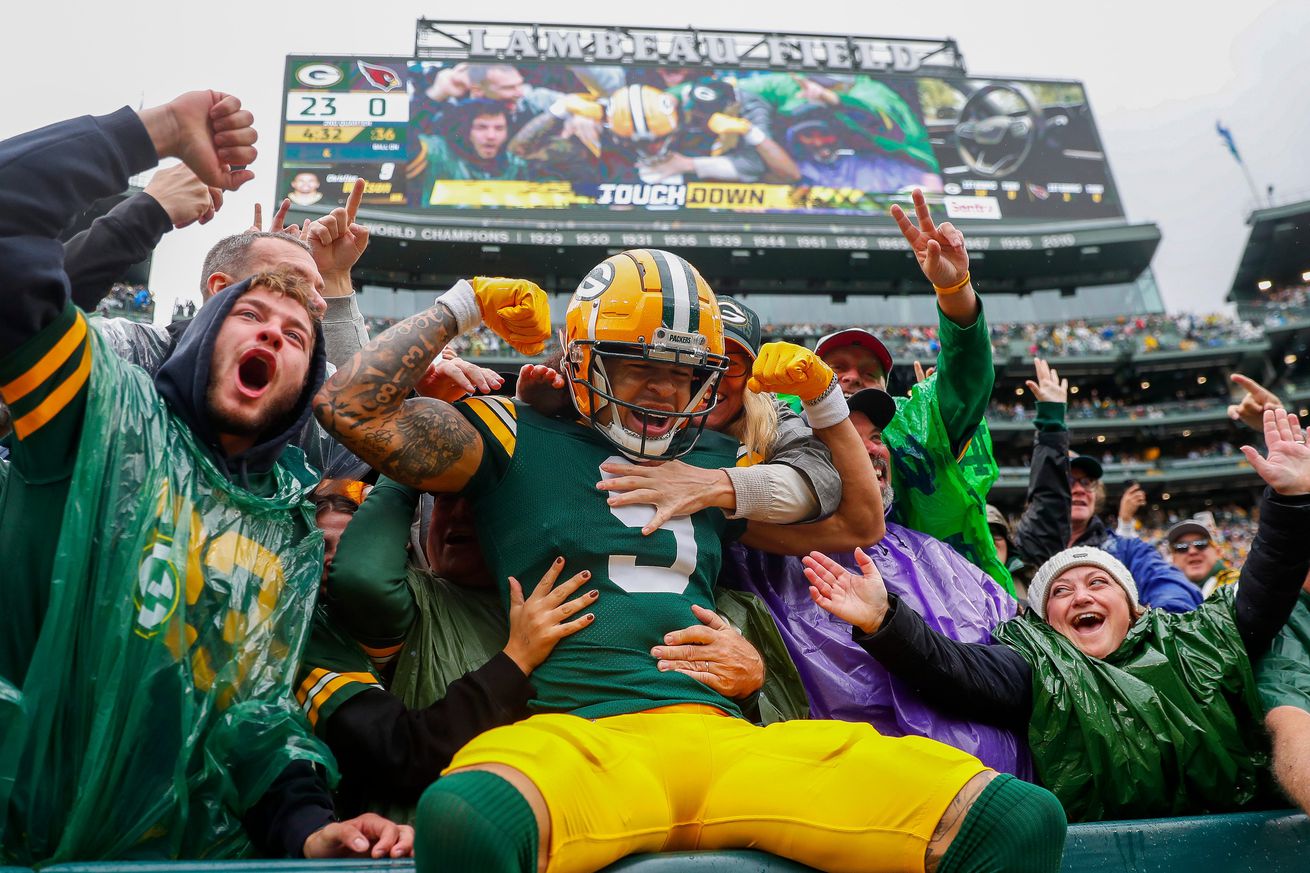
Building a package of plays to attack the 49ers in the red zone
By now, you’re likely aware of the Green Bay Packers’ issues scoring touchdowns in the red zone, either because you’ve seen the numbers or because you have screamed at your TV, “Please score a TD this time, I beg of you.” Either one of those is a valid method for understanding that the Packers red zone offense hasn’t been super efficient this year.
If we look at the overall numbers, the Packers are scoring a TD on 48.7% of their trips to the red zone, 27th in the league. They’re actually tied for 13th in the league in number of TDs scored in the red zone per game (1.9), as they’re 6th in the league in red zone trips per game (3.9). So they’re picking up a good number of TDs overall, but that’s only because they’re in the red zone at a high rate. It’s good that they’re making so many trips, but it would be nicer if they scored TDs at a higher rate. (That’s what we call high-level analysis.)
If we look a little deeper at some of the numbers, they paint a slightly nicer picture. While they’re only scoring TDs on 48.7% of their trips to the red zone on the season, they’re actually scoring TDs on 56.3% in games Jordan Love has started (which would rank them 13th in the league). Beyond that, the defenses they have gone up against this year have averaged a rank of 14.6 on the season. So, on average, they have faced above average defenses in the red zone and have scored TDs at an above average clip.
On the season, the Packers have faced 3 teams that rank in the 20s in terms of TDs given up in the red zone. In those games, the Packers have scored TDs on 71.1% of their trips to the red zone. And who do the Packers have on the schedule this week? Well well well, if it isn’t the 49ers with a defense that ranks 23rd in the league at giving up TDs in the red zone (62.5%).
So let’s build a little plan to attack the 49ers in the red zone. While this exercise started with me finding plays that have worked against the 49ers in the red zone this year, it quickly expanded to include plays I’ve seen from some of the top red zone offenses in the league. Even with including those, I’ve chosen ones I think would work against the 49ers, based on what I’ve seen from their defense.
First things first: what is the best way to attack the 49ers in the red zone?
With Fred Warner roaming at the second level, attacking the edges of the 49ers defense doesn’t always have the best outcome. Stringing out a play gives them a chance to run down the play. Just looking at what teams have done against the 49ers in the red zone, the best approach is to attack with a vertical, between-the-numbers plan. Yes, that means scrap the jet sweeps. Teams have had success with those a couple times this year, but it’s a riskier proposition. What we’re really talking here is power runs and vertical routes off those power runs.
That’s not to say we’re not threatening the edges or keeping the QB contained in the pocket. We’ll still need to widen the field horizontally, but our main attack point is between the numbers.
The Packers average 11.5 plays per game in the red zone, so let’s round up and go with 12 plays. If we were truly building out a game plan, we’d include a few more, but I’m not sure how long you guys are going to stick around. I’ve got 20 or so I could easily pull from, but 12 feels okay for now.
We’ll start with this little beauty, targeting our old friend De’Vondre Campbell [59] in coverage. We’re going shotgun spread, putting the RB away from the strength of the formation. That should give us the match-up we want. From there, we’re just giving our RB a Choice route. We want to attack the middle here, so attack hard to the outside shoulder, then cut back to the inside.
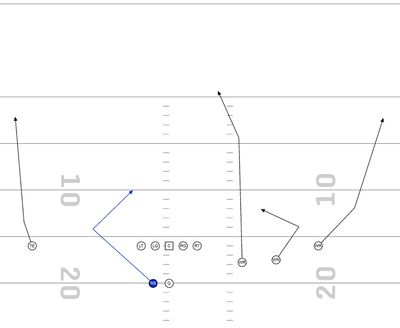
Of course, you’re not guaranteed to get that match-up based simply by alignment. If it doesn’t look like you have the match-up you want on that front, pair that RB Choice with Pinwheel. In the below clip, the Bucs are running this out of motion against the Chiefs, but you can run this from the same static, 3×1 set we just saw. Have the outside receivers angle in and create a wall, then send a wheel up from inside.
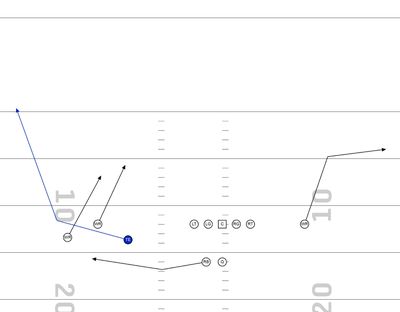
You can attack the 49ers with a power run game. I have found that adding bodies to the point of attack can be effective against this defense, but it’s nice to mix up where those bodies are coming from. One thing the Packers like to do is to get someone in motion, then snap the ball before they clear the line and have them add a body to a gap. It’s called “Escort Motion” and the Packers love to do this with Tucker Kraft. Here, the Rams use it in the low red zone, using Jordan Whittington [88] on escort motion and working as a lead-blocker post-snap. For our purposes, we’ll put Kraft on that motion and use him as the blocker.
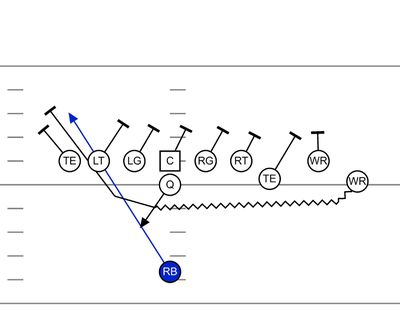
Or you can do what the Chiefs did to the 49ers. Use motion as eye candy to remove a player from the box, then attack away from the motion by throwing bodies at the line. Here, the Chiefs pull the LG and bring the TE under the formation. The LG kicks out the end and the TE works as a lead blocker.
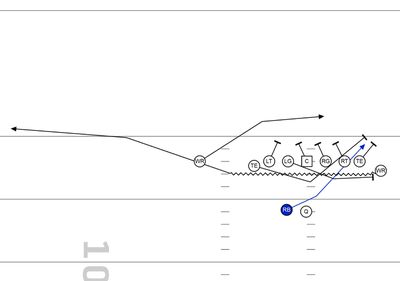
Another way you can add bodies to the running game is to use an Insert blocker. That’s where you bring a player – typically a wide receiver – into the formation and align him under the line, between the tackle and the tight end. It’s a way to get a little extra oomph at the point of attack, and it’s something the Packers like to do. When doing that, you’re looking for the WR to release through the line and block a linebacker or safety at the second level.
While the primary use of this is to add bodies to the run game, you can also use it to create open space in the defense. If they’re leaning to stop the run, you can release that WR vertically through the line. Sell the stalk block at the second level, then blow right by him.
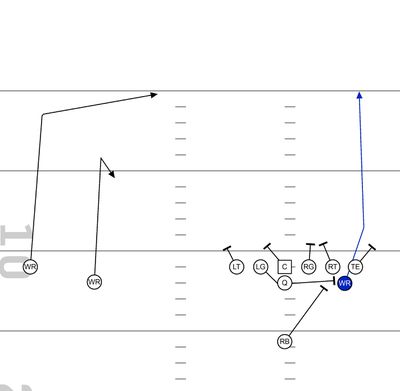
Since we’re talking pop passes, let’s steal this one from the Ravens. This is set up as an outside toss, something the Packers use a lot in their pin/pull run game. I said I didn’t want to attack the edges of this 49ers defense in the red zone, but that doesn’t mean we can’t fake that attack to get them flowing to the outside.
In the pin/pull run, you get a WR on the edge to block down, then pull the offensive line and a tight end to lead the way on the toss. You’re committing a lot of bodies to attacking the perimeter. Get the defense moving, then release the WR pinner vertically, ideally after faking a stalk block.
(The diagram below doesn’t show what the Ravens are doing here; it’s more a look at how the Packers could slightly change this up to match what they do.)
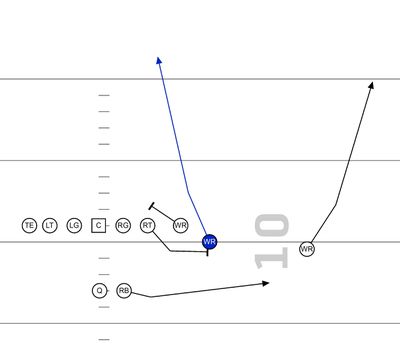
If you want to commit your QB to the running game a bit, you could build in this from the Cardinals. Lots of bodies at the line. Pull a lineman to the point of attack, take a few steps on the QB run, then release the TE and float it over the top.
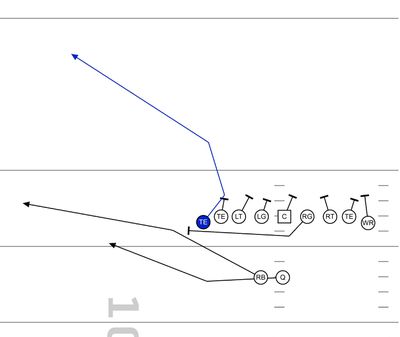
But we don’t have to be building everything out in service of a larger scheme or attack plan. The red zone is a cool place to have some one-off plays. We’ll finish up with some of my favorites there.
This one is similar to something the Packers have used already – it got Josh Jacobs his first career receiving TD – and the Bucs showed that it can work against the 49ers. Sell the screen to the outside, then angle the running back inside and under a block (or, in this case, a series of blocks). It’s a cool way to get to a middle-screen.
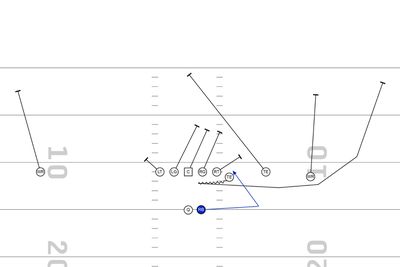
Staying with the Bucs, Arches has long-been one of my favorite designs in the low red zone. Run the outside receiver on a slant/Eliminator route, then have an inside receiver push outside initially before cutting back behind the slant. Nice way to create a little pocket of space down here.
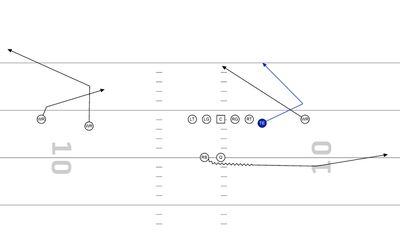
The Lions ran Arches against the Cardinals this year, but supercharged it by having Amon-Ra St. Brown [14] pivot back to the middle after initially pushing outside to the pylon. The RB is wide open in the middle, but Goff hits St. Brown for the TD anyway. Arches is built to create space by following a route to the middle. This follows the follow, which helps build in another pocket of space if the first one isn’t there.
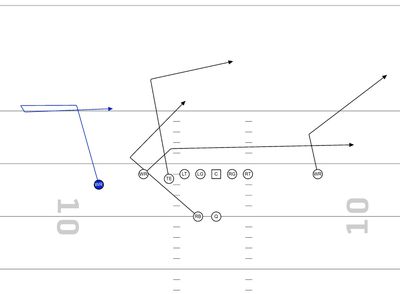
Here’s another one-off I really like from the Lions. Get the quick motion in to bump coverage, then release that man back the way he just motioned from. By pairing that with an in-pushing route from the outside, you can potentially get the defense to vacate that side of the field.
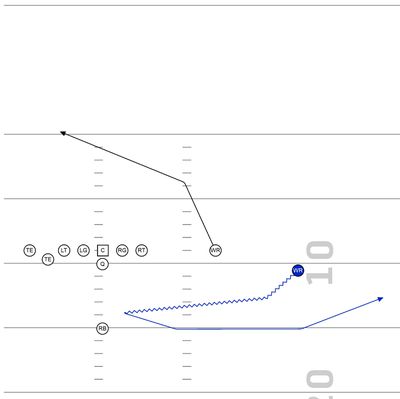
We’ll close with one of my favorites, and it’s something we’ve seen the Packers run this season. Send jet motion left before the snap, then orbit back to the right and release to the right flat, pulling a lineman to sell a sweep to that side. Then release the running back through the B gap vertically, while leaking your TE across the formation. If the vertical route isn’t available, the leak from the TE should be.
This works well off the Spinner series of run plays that the Packers started running with Malik Willis and have continued with a healthy Jordan Love.
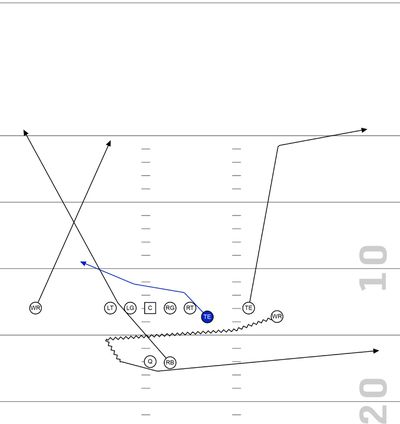
Okay I lied I want to add one more. This is one I’ve seen a couple times this year. And, while the Packers haven’t been a Mesh-heavy team since 2020 or so, but they have run it twice in the red zone this year, picking up a TD on one of those plays. So the core Mesh concept is absolutely part of their red zone package this season.
I’ve been calling this Mesh Leak. It plays out like Mesh up front (shallow crossers from either side), but then one of the crossers veers upfield and navigates the traffic downfield.
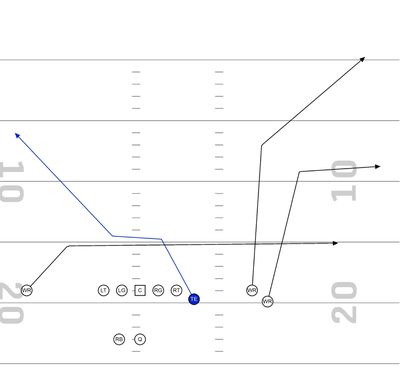
So there we have it; 13 plays that to deploy against the 49ers in the red zone that should work, given how their defense has looked in that area this season. While the Packers haven’t necessarily shown all of these looks this year (the o-line heavy QB Run Pop Pass certainly is a look I’ve never seen from them), most of these fit well into their core offensive looks and philosophy.
This package skews pass-heavy, but I am as God made me.
Albums listened to: Starflyer 59 – Lust for Gold; Poppy – Negative Spaces; Mitski – Bury Me at Makeout Creek; Bully – Lucky For You